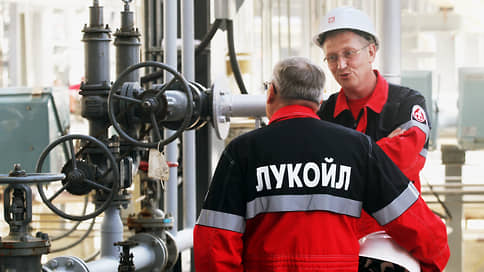LUKOIL believes in Nadezhda – Newspaper Kommersant No. 6 (7451) dated 01/16/2023
[ad_1]

According to Kommersant’s information, LUKOIL has filed a new application for granting the company a license for the Nadezhda subsoil block in the Baltic Sea. The company has been trying to get this site for six years, but last year the government unexpectedly refused to provide it, and the Ministry of Natural Resources offered to re-send the application with clarification of the boundaries of the site in order to exclude the possibility of harming the Curonian Spit National Park. According to experts, even if the site is superimposed on the protected zone of the park, it is possible to carry out drilling without harm to the environment.
The structure of LUKOIL, LUKOIL-Kaliningradmorneft, has again applied for the Nadezhda site in the Baltic Sea, sources told Kommersant and confirmed it at the Ministry of Natural Resources. The site is located in the territorial sea (within 12 miles from the coast), the company wants to get it on a declarative basis.
The oil company, which is the only subsoil user in the Baltic Sea, has been trying to obtain a license for Nadezhda since 2016. However, the government approved the procedure for considering applications for obtaining licenses in the territorial sea under the declarative principle only in September 2020, which allowed LUKOIL to request such a license for Nadezhda for the first time. In August 2021, the Ministry of Natural Resources sent to the government a draft order agreed with the relevant departments on issuing a license for the site. However, although the Ministry of Natural Resources initially checked the project to ensure that the boundaries of the license area did not overlap with the boundaries of specially protected natural areas, the government had questions regarding the impact on the Curonian Spit National Park. In turn, LUKOIL tried to prove that the development of the site would not harm the environment.
LUKOIL’s offshore fields in the Baltic in 2021 produced 216,000 tons of oil. In 2023–2025, LUKOIL plans to drill two wells at the Baltic and D6-Yuzhny blocks, as well as to put D33 into development.
As a result, in the fall of 2022, the government refused to award a license for Nadezhda to LUKOIL, the oil company asked for justification and a request to reconsider the application. In response to the company’s appeal, the Ministry of Natural Resources said that LUKOIL could re-send an application to Rosnedra for Nadezhda, but must submit substantiating materials to the agency and adjust the boundaries of the site so that they do not overlap with the Curonian Spit buffer zone. At the same time, the Ministry of Natural Resources itself officially established the boundaries of the buffer zone of the national park only in September 2022.
The new boundaries of the area requested by LUKOIL are not yet known. The application package will be opened at the end of the proposal submission window, that is, on February 1, 2023, the Ministry of Natural Resources told Kommersant. “The opening of applications submitted on paper or opening access to applications submitted in the form of electronic documents is carried out by Rosnedra on the next business day after the deadline for submitting applications,” the ministry added. LUKOIL declined to comment.
Depending on the distance of the location of the production platform specified by LUKOIL from the border of the buffer zone of the reserve, the development of the field can be organized using the drilling of directional exploration and production wells, Mikhail Grigoriev, head of the Gekon consulting center, believes. He notes that the occurrence of productive formations on the shelf of the Baltic Sea in the depth range from 2.2 thousand to 2.5 thousand meters completely eliminates the negative impact of the development of the deposit on the natural environment of the Baltic Sea.
[ad_2]
Source link





